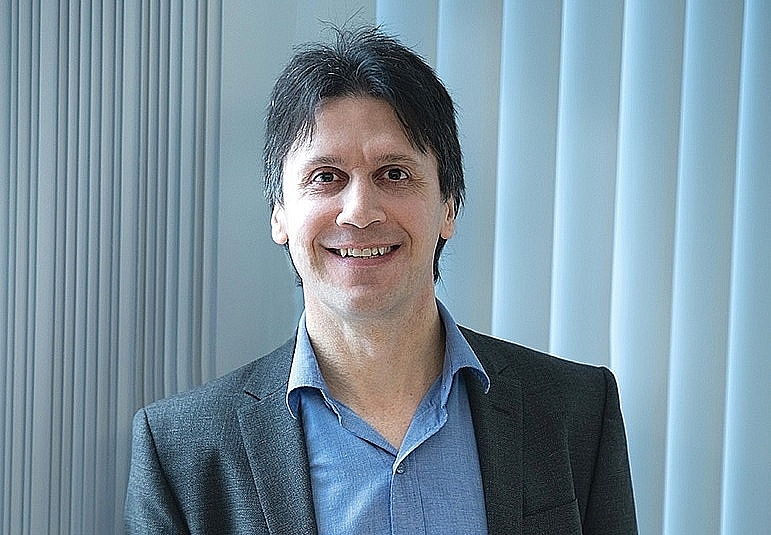Broadband data upsurge tests resilience of networks globally
 |
| Denis Brunetti, president of Ericsson Vietnam, Myanmar, Cambodia, and Laos |
Over the past few decades, every passing generation of cellular mobile connectivity has allowed us to enjoy enhanced content quality as well as the power of mobility with the ability to consume data anytime, anywhere for work, study, and play. Video is increasingly embedded in all forms of online content to become the main driver for the exponential growth in mobile data traffic. Video traffic in mobile networks is forecast to grow by around 30 per cent annually through to 2025, accounting for 75 per cent of mobile data traffic from slightly more than 60 per cent in 2019.
In addition, the current COVID-19 global pandemic has led to another wave of data explosion as people all over the world spend more time being at home under quarantine. The dramatic changes in human behaviour patterns have caused measurable changes in the usage of both fixed and mobile networks worldwide. Even as more people increasingly study and work from home, online education, virtual training, and virtual meetings and conferences are becoming the new reality. A new form of social interaction has appeared with both fixed and mobile broadband connectivity, enabling a multitude of indoor entertainment activities as well as virtual meet-ups with friends and family, while being in the safety of our homes.
In a time of crisis, information and communications are critical. Mobile networks are an essential part of the communications backbone that is enabling health workers, public safety officials, and critical businesses to stay connected during this time of global crisis. The world’s mobile networks are proving yet again that they can deliver the performance and reliability to support both consumers and enterprises in this hour of need. At Ericsson, we are working hard to ensure that we provide seamless connectivity for public services, businesses, and families worldwide.
Given that many countries are facing lockdown situations and more and more people are working from home, traffic patterns on networks too are seeing unprecedented changes. There are significant changes in the usage of both fixed and mobile networks worldwide. Traffic is shifting from city centres and office areas to residential and suburban areas. Network load shifts geographically as people work from home. We are also seeing an increase in voice traffic across 2G, 3G, and 4G networks in many markets, including Vietnam.
Ericsson studies indicate an average 20-70 per cent increase in voice traffic across networks with more and longer voice calls being made by people arising out of the COVID-19 situation. People are spending more time online at home and as a result, are generating more traffic per day. Most operators are experiencing a 10-20 per cent increase in data traffic (both upload and download) on the mobile network with streaming services also contributing to the data increase.
Some of the ways by which technology providers such as Ericsson are managing the performance of networks is by network re-planning and end-to-end re-dimensioning activities focusing on network design, performance, and traffic handling. Ericsson engineers ensure that the customer experience from the network is not compromised. Machine learning-enabled capacity planning enables the operator to proactively identify and act on network bottleneck issues. Application-based (e.g. web, chat, video) traffic handling is managed through service-aware configuration.
Ericsson has deployed tools and modules (e.g. virtual drive test) on Ericsson networks that enables our customers to handle emergencies in an efficient manner. Ericsson's operations engine allows customers to succeed in ever-evolving situations, such as emergencies, including improved efficiency, customer experience, and innovation, underpinned by AI and automation.
Being predictive rather than reactive
Ericsson’s Network Intelligence solution enables networks to be predictive instead of being reactive. AI and machine learning-driven applications work around the clock to provide the network stability needed for service continuity and optimal end-to-end performance. Automation allows for the elimination of network failures through the predictive identification of potential anomalies, performance degradations, and failures. This helps improve customer experience through greater network resilience as well as reduced downtime.
In fact, according to Ericsson’s Network Intelligence Report, leveraging AI/machine learning tools in network operations can lead to reducing network performance issues by up to 60 per cent and decreasing critical incident handling by up to 35 per cent.
Operators' response to COVID-19
So how are service providers responding to COVID-19? We are seeing telecom service providers making the necessary changes in their data plans – either increasing the “bucket size” or allowing unlimited data for a short period of time. Some operators are also offering unlimited national calls. And even as they respond to the current situation with speed and agility, some service providers are already planning to advance their investments in the networks to boost capacity to tackle the data upsurges the networks are experiencing.
The heroes
Even as the telecom industry is working together globally to handle the COVID-19 crisis, the heroes are our network engineers and field maintenance staff who continue to work relentlessly to restore the network faults and ensure availability of connectivity at all times, despite the challenges and difficult circumstances.
Let’s continue to acknowledge the power of 4G and 5G mobile broadband connectivity.
 | 5G to fuel smart manufacturing in Vietnam As 5G has already gone live in several markets around the world, people are getting a first-hand experience of the technology. Denis Brunetti, president of ... |
 | 5G to drive Vietnam’s Industry 4.0 vision The Vietnamese government has taken strategic decisions to ensure that the country is advantageously positioned and best equipped to embrace Industry 4.0, capturing the opportunities ... |
 | Ericsson launches new AI-powered Network Services As part of its push to boost its footprint in Vietnam, Ericsson has launched two new AI-powered offerings in its Network Services portfolio, enabling communications ... |
What the stars mean:
★ Poor ★ ★ Promising ★★★ Good ★★★★ Very good ★★★★★ Exceptional
Related Contents
Latest News
More News
- Mondelez Kinh Do - a chapter of purpose-led leadership in Vietnam (December 18, 2025 | 09:44)
- VNPAY services receive the highest-level PCI DSS international security certificates for six consecutive years (December 17, 2025 | 23:47)
- PPL extends its reach into ASEAN (December 17, 2025 | 15:44)
- Over 600 BUV graduates meeting quality benchmarks across triple quality assurance levels (December 17, 2025 | 13:00)
- HEINEKEN Vietnam partners with Ho Chi Minh City Traffic Police on road safety drive (December 17, 2025 | 09:42)
- BUV and China’s CSCSE sign MoU to boost educational cooperation (December 17, 2025 | 08:00)
- PVT Logistics honoured with ‘Fast Enterprise Award’ at APEA 2025 (December 16, 2025 | 18:22)
- Empowering Sustainable Data Centers with Smart Infrastructure Solutions (December 16, 2025 | 13:59)
- Vietjet wins gold ESG transport sustainability award in Taiwan (China) (December 13, 2025 | 22:03)
- Legal framework completed for national digital transformation (December 13, 2025 | 21:55)

 Tag:
Tag:

























 Mobile Version
Mobile Version